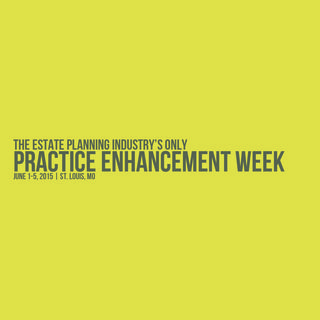Filling your calendar each month with new initial consults shouldn’t be such a struggle.
In fact, when you know how to easily generate 15-25 initial appointments in just two hours of your time, you’ll never have to lose another wink of sleep worrying about where new business is coming from.
 You can just dip into your “toolkit” and make magic happen… on your own terms and on a budget that you feel comfortable with.
You can just dip into your “toolkit” and make magic happen… on your own terms and on a budget that you feel comfortable with.
So how is it done? SPEAKING!
We’re not talking about those generic, Chicken Dinner Estate Planning Workshops, either. Chances are, you’ve tried them before–only to spend a ton of money with very little results.
Here at Lawyers With Purpose, we have a unique methodology for conducting workshops that have worked consistently for 35 years to “put butts in seats,” keep audience members engaged, and close the presentation in such a strategic way that listeners can’t help but rush the podium to schedule an appointment with you.
15-25 new initial appointments per workshop is just the average that our Lawyers With Purpose members experience. And many are conducting more than one a month!
What would your life and practice look like if you started each month with 15 + initial appointments already on the books?
We’ve got 2 programs just for you! Our Train the Trainer Speaker School AND “How To Protect Your Stuff in 3 Easy Steps” are where you learn how to make it happen.
We are opening these two intensive workshops to just a handful of attendees happening during the week of June 1st in St. Louis, MO on a first come, first serve basis.
It doesn’t matter if you’ve never conducted a workshop before or if you’re an experienced speaker who just wants to “sharpen the saw” and boost results. These two programs will teach you, among other things, how to:
- Fill the room with only your ideal prospects
- Engage your audience and hit deep emotional pain points with our training on platform perfection, value proposition and measuring the effectiveness of stories.
- Speak to SELL by “seeding” your desired outcome, leading audience members down your unique funnel and closing in such a way that incites listeners to take immediate action.
Plus, attendees of the “How To Protect Your Stuff…” Specialty Workshop will leave with our ENTIRE “done-for-you” seminar package, including handouts, PowerPoint presentations, speaker notes, evaluations marketing materials, video & audio of the workshop and audio of stories to use in your presentation.
All you’ll have to do is pick a date and venue and you’ll be ready to host your first workshop as soon as you get home!
If you’re even remotely curious about either of these programs, don’t wait to go HERE now to get all of the details and registration information. Spaces will go fast—we fill up each and every year.
To your success,
Molly
P.S. You do not have to attend the entire retreat to participate in Train The Trainers: Speaker School or the “How to Protect Your Stuff…” Specialty Program. Feel free to join us just for just these events, or stay for the entire week for the best experience and opportunity to grow your practice. Register now: retreat.lawyerswithpurpose.com










